With the recent release of the Samsung S24 Ultra, North America now has three premium-priced phones that happen to compete in a very similar way against each other. The Apple iPhone 15 Pro Max, Google Pixel 8 Pro, and Samsung S24 Ultra, all have state-of-the-art displays, HDR-compliant photos and videos, and a 5X telephoto lens to compliment the main and ultra-wide cameras.
In Canada, there are very few major players in the mobile phone market beyond the big three. Samsung, Apple, and Google, easily dominate the field, leaving a few scraps to companies such as Motorola or LG. In the U.S. market, the story is similar although quite a few more companies are jockeying for the remaining customers. Still, these brands sit at the top, so we decided to test them out based on criteria focused on photographic and videography applications.
Of course, the efficacy of a smartphone goes well beyond the confines of its photographic capabilities, but creators do rely on smartphones for a lot of their visual work nowadays, and the image quality only gets better and better. A phone needs to deliver sharp images, good performance in low-light situations, and convincing AI tools for portraits and editing purposes. So with that being said let’s get right into the cameras themselves.
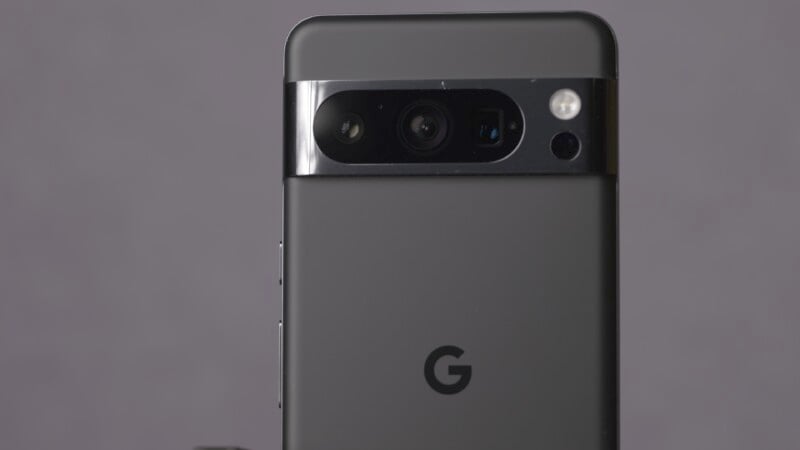
The Ultra-Wide Cameras
The ultra-wide cameras on all three of our smartphones deliver similar results and can be used for some startling close macro shots. However, they do have some differentiating factors worth noting.
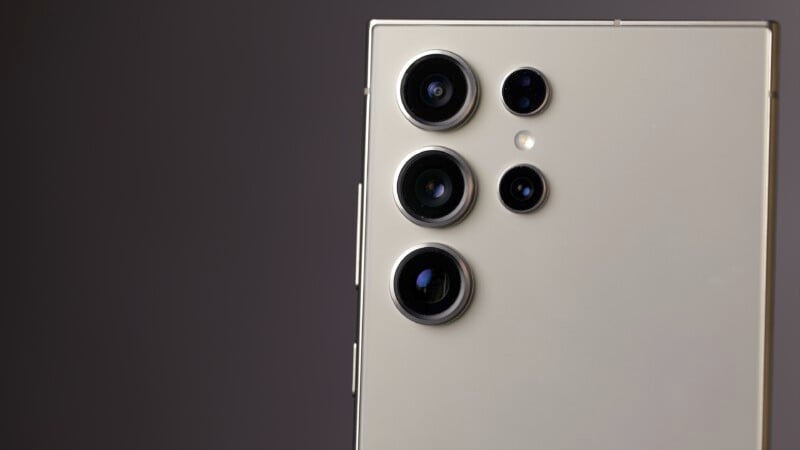
In second (or third, depending on how you look at it) place, we gave a tie between the Samsung S24 Ultra and iPhone 15 Pro Max. With both cameras sporting a similar 13mm full-frame equivalent focal length, 12-megapixel resolution, and the same f/2.2 aperture, there is no clear winner here. Both are fun to use for close-ups and both give middling results in darker conditions.

The real winner goes to the Google Pixel 8 Pro. Google has improved the camera hardware across the board in its latest handheld, and the ultra-wide camera is wider at an 11mm full-frame equivalent, with a brighter f/1.95 aperture, and a whopping 48-megapixel sensor. More light and more megapixels with an even wider field of view make Google stand out from the crowd.
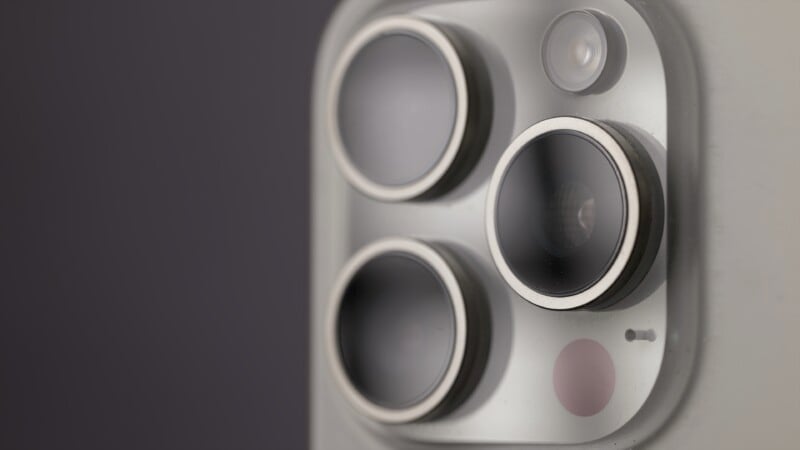
The Main Cameras
The main camera of a smartphone will be its best one and is relied on heavily to create detailed depth maps for portrait work as well as provide data to up-res other cameras and create digital lenses that fall in between the phone’s other physical cameras. It’s also your best option in low-light situations and when higher megapixels are desired. With all this responsibility, it better be a good one.
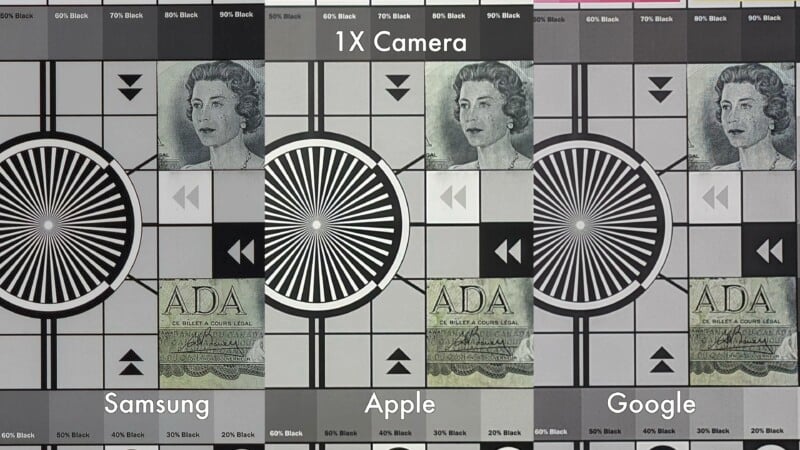
In third place, we found the Samsung S24 Ultra as having the weakest of the main cameras. Don’t get me wrong though, it’s an excellent camera overall. However, it does tend to have an overly processed look to its images, something which S23 owners also complained about. Colors sometimes look pleasing but sometimes look overly vivid or harsh in tone. Lastly, the 200-megapixel mode, while unique, goes largely unused. The high megapixel mode only works for taking JPEGs, takes up a fair amount of storage, and gives only a minor increase in detail that will go unnoticed in most situations.

In second place we like the Apple iPhone 15 Pro Max for having a soothing warm tone to its images and good performance overall. It has a similar amount of detail to the Samsung S24 Ultra but without the harsh over-sharpened effect baked in. If you want a bump in contrast, you can always add it later.

Our winner in this category is again the Google Pixel 8 Pro thanks to a main camera that seemed to capture more detail and finer detail than its competitors. Although the specs tilt only slightly in Google’s favor, the results tend to be the best, and the overall color is natural and balanced which allows the user to have a neutral starting point from which to make further edits. The physically larger sensor also delivers shallower depth-of-field than its rivals.

The 5x Telephoto Cameras
With the Samsung 24 Ultra making a controversial move to a 5x lens instead of its storied 10x, all three smartphones now have a similar range. While there are still additional levels of zoom across all the cameras, we wanted to stick to the physical lenses present. It’s worth noting that the S24 Ultra does have a 3x lens as well but it is fairly low spec and isn’t as useful to fill the smaller gap between the 1x and 5x on the new phone.
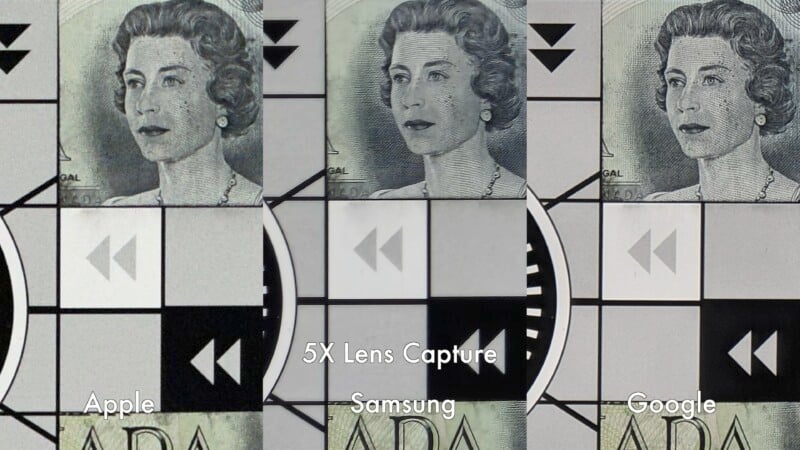
At the bottom of the pile, the iPhone 15 Pro Max debuted a new compact 5X lens but one that has a relatively low 12-megapixel count. In social media applications, the low megapixels are invisible but when used for printing, cropping, or to display on larger screens, the iPhone shows its weakness with noticeably less detail than its competitors.
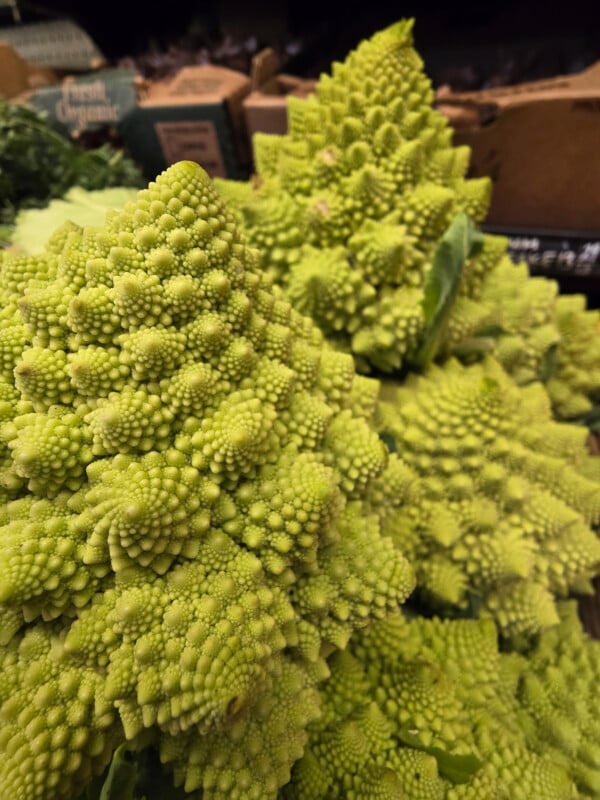
Second place goes to the Samsung S24 Ultra with its very well-stabilized 5x lens that delivers sharp results. The only draw against it is thanks to the slower f/3.4 aperture when the other phones are pushing f/2.8. Regardless, I applaud the new 5x lens in the Samsung, and thanks to its 48-megapixel sensor a 10x cropped lens is still available with similar results given to the 10x lens in the S23 Ultra.

That means the Google Pixel 8 Pro, again, is the winner. The recent updates to the hardware in the 8 Pro are paying dividends. The 5x lens is a 48-megapixel, 112mm full-frame equivalent lens with an f/2.8 aperture and delivers well-stabilized images. It sneaks a minor win over the S24 Ultra thanks to its brighter lens.

Portrait Modes
Portrait mode is something I use often on whichever phone is in my pocket. Thanks to a combination of depth maps, multiple lenses, and multiple points of focus, all three smartphones can deliver a shallow depth-of-field look to images. This is especially useful for classic portraits but I also use it to give a soft background to product shots and macro shots too.
All three phones can also apply a portrait mode effect to images after the shot is taken, and the level of blur can be adjusted to the user’s taste. Oddly, the Google Pixel 8 Pro cannot use portrait mode with its new 5x lens so any adjustments to the depth-of-field have to be done after the image is taken.
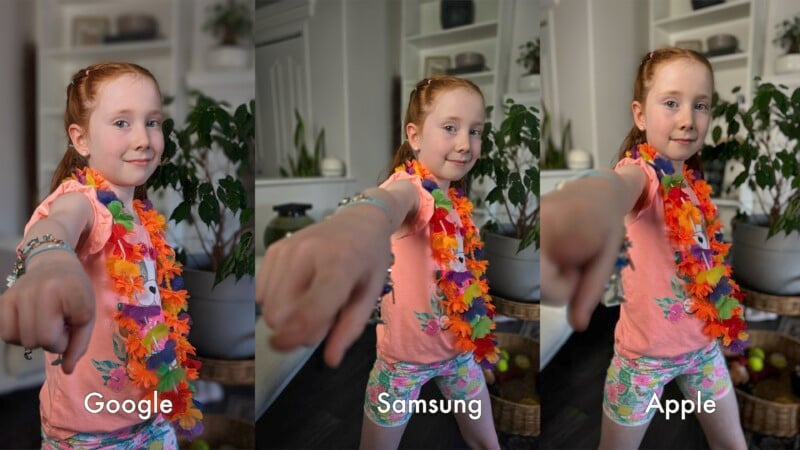
The Google Pixel 8 Pro is going to take last place when it comes to portrait mode. Google has long struggled with seamlessly blending the subject into the background and that doesn’t change here. Portrait mode often leaves a noticeable halo around subjects and areas that should be out of focus are still sharp. The transitions from sharp to soft areas are the least natural out of the Google Pixel 8 Pro. It’s worth pointing out that the Pixel also shoots portrait mode as a 1.5x focal length rather than the 1x on the other phones.

In second place the Samsung S24 Ultra handles what should be in focus and what should be out remarkably well. It also does better with hair than Google does, however, it tends to deal with errant hairs and flyaways by simply cropping them out or blurring them out unnaturally. This still tends to be more convincing than obvious halos, but it is better suited to people with short, close-cropped hair.

The winner, despite the lackluster detail on the 5x lens, is the iPhone 15 Pro Max. Apple based the look of the bokeh in the 15 series on famous photographic portrait lenses and the results are convincing. Not only do subjects blend naturally with their environments, but they also seamlessly fall off from in-focus to out-of-focus areas. Hair has a more natural rendering, and the iPhone simply has the most “traditional” camera look to its portraits.

Night Photography
One of the big downsides to any phone is its relatively small sensor size, which is a real problem as far as low-light photography is concerned. Phones counteract this by shooting multiple frames and combining them as well as applying noise reduction to the images. In most cases, this allows for decent handheld shots to be achieved, even in fairly dark situations. Tripods can be useful but are rarely utilized on phones due to the inherent inconvenience of using one.
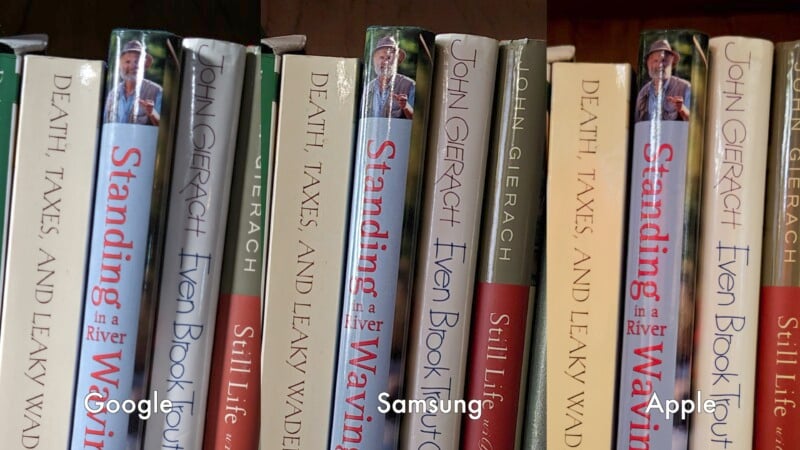
The iPhone has a good night mode setting but it’s the least useful of the bunch. Limited to 12 megapixels, it also shows the most noise in the images although it does maintain good color rendition in low-light scenes. The night mode is also automatic in the sense that the iPhone decides when it is appropriate or not. We far prefer to be able to use it when we want to, to force longer shutter speeds and gather more light, or deal with harsh contrast and boost shadows ourselves.
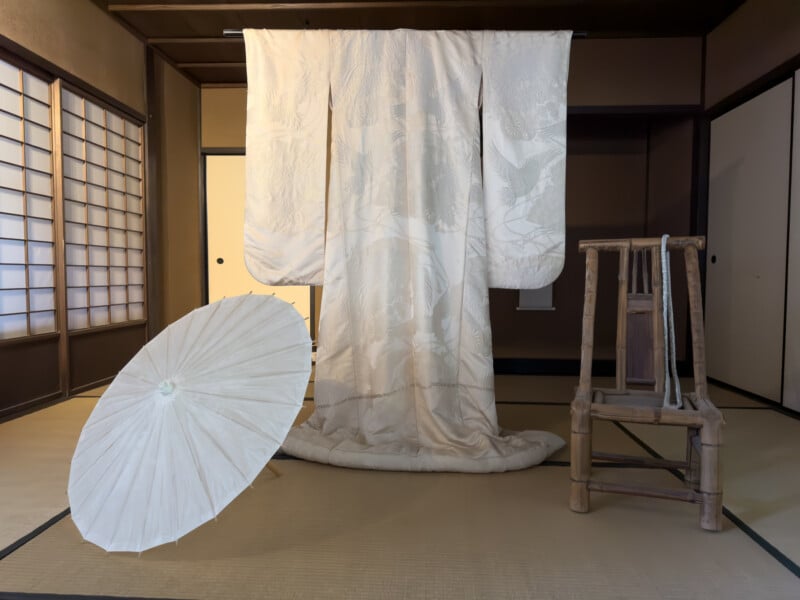
Second place goes to the Samsung S24 Ultra. Like the iPhone 15 series, the S24 is locked at 12-megapixels maximum. However, it applies a fair amount of noise reduction and sharpening that causes some loss of subtlety in between tones. Samsung’s “Nightography” processing may be heavy-handed but is surprisingly effective in dark scenes and delivers detail that punches above its weight.

The win goes to the Google Pixel 8 Pro which builds on the already excellent reputation earned by its predecessors. You get 50-megapixel images stacked from multiple shots that have good noise control and plenty of detail. I like the color and quality of shots out of night mode, and the Google Pixel 8 Pro can even rival larger-sensor cameras with a tripod.

Videography
The smartphone has become a primary camera for a content creator’s main work and nowhere is that more true than in the realm of video. With reels and short-form videos taking over, the smartphone is a convenient and effective tool that you always have with you. But it doesn’t just have to be a point-and-shoot affair. Modern phones have very capable video recording to go with their take-it-anywhere convenience.
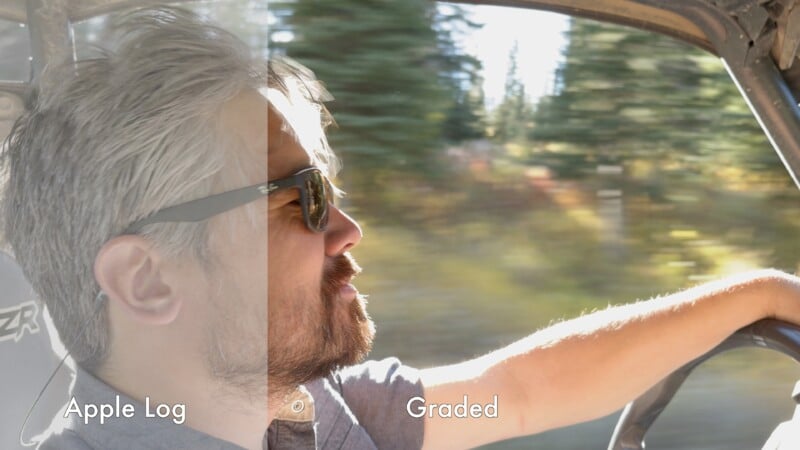
The Google Pixel 8 Pro needs some work, however. The 4K video lacks detail and relies on an over-processed look to wow you. Casual users might be fine with this, but content creators can find better elsewhere.
The Samsung S24 Ultra is more feature-rich with its 8K record modes and excellent manual controls. As Android phones go, the S24 Ultra is the best you’ll find, and third-party apps can unlock even more potential.
The Apple iPhone 15 Pro has run away with the video market. Its log profile is more malleable and can deliver natural-looking tones, and wider dynamic range to boot. You’ll have to download apps like Black Magic’s highly capable video software, but the results are worth it. Apple also gives proper locked-off frame rates and an HDR profile which is better processed and universally accepted.
The Battle of the Big Three Smartphones: The Tally
Due largely to the updated hardware in the Google Pixel 8 Pro and with a lot of weight given to individual lenses, the latest Google phone has a lot going for it. I love the raw file quality and overall color of the Pixel, but I wouldn’t rely on it for advanced video applications. As a photographer though, I feel that it delivers the best image quality out of the three phones we tested.
The iPhone 15 Pro Max comes up second with the best video quality and most convincing portraits. I love the images, and although Apple shields its more casual users from any scary manual controls, third-party apps can be used to unlock advanced photo control if desired.
Now the S24 Ultra may have scored last but it has the most second-place finishes owing to its versatile nature. It can handle almost anything well and might be the easiest choice for many users. I also appreciate the full-featured camera interface although some owners might find it a little intimidating.
It’s worth noting that both the Google and Samsung phones have additional AI editing tools that even utilize cloud-based servers to do the heavy lifting. I have to say though, that as important and exciting as the new technology is, the results are disappointing. As the databases get more complex we should see some real performance gains which will add weight to future evaluations, but as it stands now, I would personally use them only sparingly.
Ultimately, most users will stay in the Apple ecosystem if they already are, but Android users have more freedom to dabble in different brands. We hope we’ve shed some light on which phone might be best for you.
"Smartphone" - Google News
January 30, 2024 at 10:03PM
https://ift.tt/1bq72Tx
The Battle of the Big Three: Which Smartphone Delivers the Best Images? - PetaPixel
"Smartphone" - Google News
https://ift.tt/5n4dawH
https://ift.tt/07yrGah
Bagikan Berita Ini














0 Response to "The Battle of the Big Three: Which Smartphone Delivers the Best Images? - PetaPixel"
Post a Comment